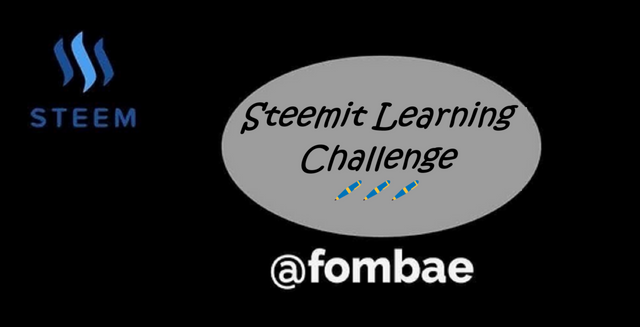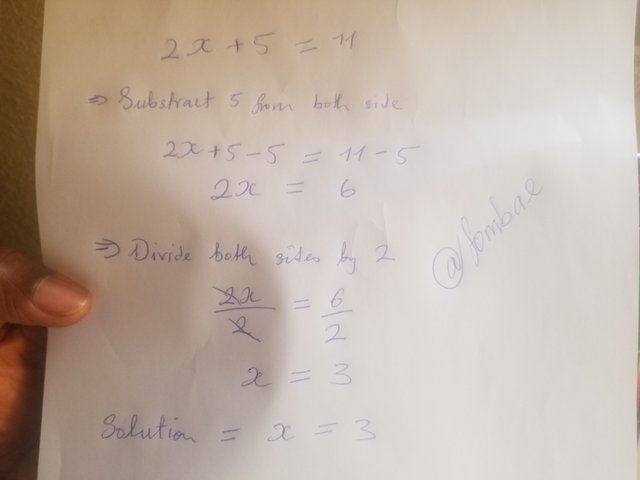SLC-S22W2/Equations and inequalities.

Greetings Steemit friends
Explain the difference between linear and quadratic equations. Provide examples of each type of equation and describe their general forms.
Linear and quadratic equations are the two types of polynomial equations. These equations have a variable raised to a non-negative integer power. They have their distinctions, which I will try to highlight.
Linear Equations: In linear equations, the variable is raised to a non-negative integer power of 1.
Example ax + b = 0
Where
x (variable raised to power 1)
a and b (Constant)
a can not be equal to 0
If we have to plot a linear equation on a graph, we are expected to have a straight line.
y = mx + c
Were
x (where the line crosses the x-axis)
m (slop)
c (where slop is intercepted from y)
Practical example
2x + 4 = 0 is the linear equation
y =2x + 4 is where the slope is intercepted.
With linear equations, only one real solution and a straight line are expected when represented on a graph.
x = -4/2
x = -2
y = 2(-2) +4
y = - 4 + 4
y = 0
y = 0, which means no y-intercept
Quadratic equations: In quadratic equations, the variable is raised to a non-negative integer power of 2.
Example ax^2 + bx +c = 0
Where
x (variable raised to power 2)
a, b and c (Constant)
a can not be equal to 0
If we have to plot a vertex form of a quadratic equation on a graph, we are expected to have a parabola. It can either crave upward (a>0) or crave downward (a<0)
Practical example
x^2 - 2x + 2 = 0 is the quadratic equation
=> 1x^2 -2x +2 =0
a =1, b=2, c=2
y = a (x -h)^ + k is the vertex form, where h is the x coordinate and k the y coordinates. These points determine the highest or lowest point of the parabola.
y=(x−1)^2+1
Coordinates (1,1)
a = 1 > 0 Parabola crave upward.
With quadratic equations, you can have more than one solution.
Describe two different types of inequalities(Which are not explained in the course). Provide examples of each kind of inequality and explain how to solve them
I will look at Absolute value and Exponential Inequalities.
Absolute value inequalities are used to define possible values for a variable within a range. There are two forms of an absolute value inequality:
| x | < a: Meaning value of x should be with a from 0
| x | > a: Meaning value of x should be bigger than a from 0
- Example
Case 1: | x-3 | < 6
Step 1: Split the equation into two parts
- 6 < x - 3 < 6
Step 2: Solve each part separately
- 6 < x - 3 ===> -6 + 3 < x
x - 3 < 6 ===> x < 6 - 3
- 6 + 3 < x < 6 - 3
- 3 < x < 3
Solution x (-3,3)
Exponential inequality makes use of exponential expressions and logarithms. Exponential Inequality takes the form ;
a^x > b or a^x < b where a > 0 and not equal to 1
- Example
Case 2: 3^x > 81
Step 1: Start by express 81 as a power of 3. Here we are trying to have both sides have the same base.
81 = 3^4
Step 2: Substitute our equation
3^x > 3^4
Step 3: Compare exponents
Both bases are the same with 3 as the value. 3>1, showing that the inequality will be true if x > 4.
Solution: x >4
Solve the following linear equation: 2x + 5 = 11. Show a step-by-step solution and share its practical example of how this equation can be applied in real-life scenarios.
Real-life scenario: A Man goes to the market with $11, plans to buy tomatoes that cost $2 each, and needs to pay a flat fee of $5 for transportation. How many tomatoes did he buy from the market?
Relating to the linear equation 2x + 5 = 11, x will represent the number of tomatoes.
Using the step in the image above, x = 3, meaning the man bought 3 tomatoes from the market.
Task 4:
- Case 1: Tom's Bakery
What Tom's Need for each chocolate cake is :
- 2 cups of flour
- 1 cup of sugar
- 1/2 cup of cocoa powder
What Tom has available
- 10 cups of flour
- 8 cups of sugar
- 4 cups of cocoa powder
To have the maximum number of cakes Tam can make, Let x be the number of cakes.
Step 1: Develop an equation for each of the ingredients
- Flour:
2x ≤ 10(2 cups in 1 cake) - Sugar:
1x ≤ 8(1 cup in 1 cake) - Cocoa powder:
1/2x ≤ 4(0.5 cup in 1 cake )
Step 2: Let solve for x in each ingredient
Flour :
2x ≤ 10
x ≤ 10/2
x ≤ 5
Sugar:
1x ≤ 8
x1/1 ≤ 8/1
x ≤ 8
Cocoa powder:
1/2x ≤ 4
x ≤ 4*2
x ≤ 8
Step 3: Get the limiting factor, which is the smallest value of x for all the equations above.
x ≤ min(5,8,8)
5 is the limiting factor
Solution x ≤ 5.
So with the above resources, Tom will be able to make a maximum of 5 cakes.
The inequality comes in when Tom wants to make 6 cakes greater than 5. He will need more sugar to meet the requirement. Yeah, he has 8 cups available, and we have made use of 5. So, at this point, Taom has used up all the available flour and has nothing left to process for another cake.
Step 1: Set up the inequality
x ≤ 8 (Sugar)
x ≥ 6 (Min requirement)
Step2: Combine the inequality
6 ≤ x ≤ 8
At this point, Tom can only make cake between 6 and 8 if other resources are available.
- Case 2: Number of Gallons Ashley Needs
Giving information
240 miles (Distance from City A to City B)
20 miles per gallon
2 gallon (initial gas in the tank)
1 gallon (minimum on arrival)
To find the minimum number of gallons of gas (x) Ashley needs to purchase
Step 1: Let's get the total number of gallons needed for the trip by Ashley.
Total number of Gallons = Total distance/miles per gallon
Total number of Gallons = 240/20 = 12 gallons.
Ashley needs 12 gallons and good for her, her tank can hold up to 12 Gallons.
Step 2:
Remember, Ashel has 2 gallons in his tank and wants to have at least one arriver at City B. Let's set up our equation.
x + 2 ≥ 12 - 1
Simplify
x + 2 ≥ 11
Step 3: Let solve for x
Subtract 2 from both sides.
x + 2 - 2 ≥ 11 - 2
x ≥ 9
From the question, Ashley needs to get at least 9 gallons of gas to arrive at City B with 1 gallon left in her tank. But in real life, this scenario is an inequality with the plan resources. She is expected to complete the trip with 12 gallons, which is what her tank can hold. Note that it will mean an empty tank without the expected 1 gallon left.
cc; @khursheedanwar
Cheers
Thanks for dropping by
@fombae
